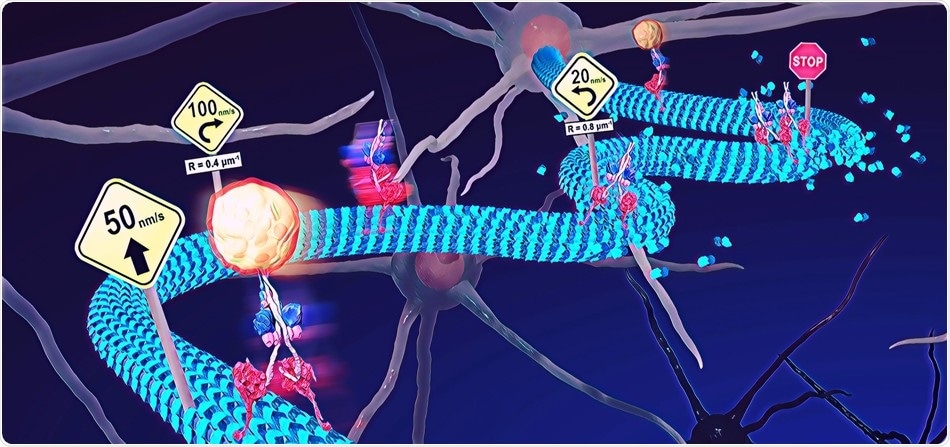Scientists develop a new approach to test the impact of the deformation of small cell proteins resembling a train track on their own function.
The study outcomes could help verify the roles played by deformed “microtubules” in neurological disorders like Parkinson’s and traumatic brain injuries.

The relationship between the deformation of microtubules and their biological functions may explain incidents that involve mechanical stress on cells. Image Credit: Syeda Rubaiya Nasrin, Tanjina Afrin, et al., ACS Applied Bio Materials, March 5th, 2020.
Microtubules are tube-like proteins that serve as train tracks for other cellular proteins to migrate as they carry molecular cargo. In specific diseases, they become deformed, which affects this transport process. However, scientists had not yet created an experimental configuration that enables them to investigate this properly.
In a study reported in the ACS Applied Bio Materials journal, biophysicist Akira Kakugo from Hokkaido University and his team devised a novel method that enabled them to manipulate the deformation of microtubules, visualizing its effects on their transportation function.
Microtubules were fastened to an elastic “microstretcher” using proteins. Upon stretching the microstretcher, the microtubules lie parallel to the surface without undergoing deformation. When the microstretcher is relaxed slowly, the microtubules get buckled.
Motor proteins named dyneins were bound to the microtubules. Within the cells, dyneins appear to walk along microtubules while transporting cargo. As part of the experiment, the dyneins were conjugated to a fluorescent cargo.
Then, the team observed the impact of stretching and relaxing the microstretcher on the dynein-cargo movement along the microtubules.
It was identified that the movement of dynein-cargo was quicker as the microtubules started to buckle, but only up to a specific point. When the buckling strain reached 25%, the moving proteins and their cargo started to slow down.
With further bending of the microtubules, they exhibited complete stops. It was also observed that the speed of movement differed along various sections of the buckled microtubules.
The researchers propose that these modified microtubular dynamics could be the basis of their roles in controlling several cellular activities. As a next step, they intend to study the effect of microtubular deformation on the movement of another motor protein known as kinesin on its surface.
Our experimental set-up enables us to study the relationship between the deformation of microtubules and their biological functions,” The more we understand this process, the closer we might get to designing new nature-inspired materials that can act in a similar way.”
Akira Kakugo, Biophysicist, Hokkaido University
According to Syeda Rubaiya Nasrin, “The findings are also expected to help explain the pathology of traumatic brain injury, which mechanically stresses cells, and neurological conditions like Huntington’s and Parkinson’s diseases, in which microtubules are known to malfunction.”
Dynein-cargo transportation along microtubules
A video showing dynein-cargo transportation. Video Credit: Syeda Rubaiya Nasrin, Tanjina Afrin, et al., ACS Applied Bio Materials, March 5th, 2020
Source:
Journal reference:
Nasrin S. R., et al. (2020) Regulation of Biomolecular-Motor-Driven Cargo Transport by Microtubules under Mechanical Stress. ACS Applied Bio Materials. doi.org/10.1021/acsabm.9b01010.